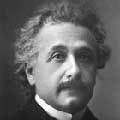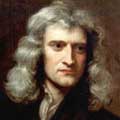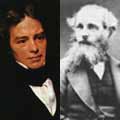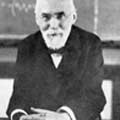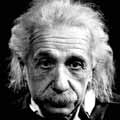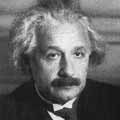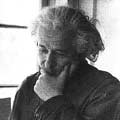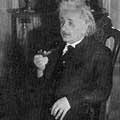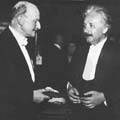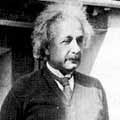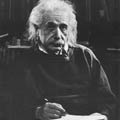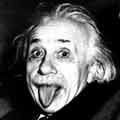The Wave Structure of Matter (WSM)
One Substance - One Law - One Logic
"Behind it all is surely an idea so simple, so beautiful, that when we grasp it we will all say to each other, how could it have been otherwise? How could we have been so stupid?" (Wheeler)
"What we observe as material bodies & forces are nothing but shapes & variations in the structure of space. Subject & object are one." (Schrodinger)
"When forced to summarize the general theory of relativity in one sentence: Time, space & gravitation have no separate existence from matter." (Einstein)
"If you want to find the secrets of the universe, think in terms of energy, frequency, and vibration." (Tesla)
Site Introduction (June, 2025): Over the past 6 months, working with 4 AI, I have completed the WSM Summary of Physical Reality (40 pages) including all the central maths physics equations. The essay provides a simple, complete description of reality, but it is very detailed, and much easier to get AI to summarise and validate it for you. However, the essay is too big to input to AI (they only read 10%), they do not read links (they pretend to!), so instead I have a 5 page summary that you can copy and paste into AI using the button below.
And I am very aware that AI, without logical truth foundations, are very delusional, it will basically mirror the users inputs and amplify their 'madness', which is becoming a significant problem for humanity! However, once they have absolute logic / truth foundations from WSM's One Substance - One Law then they are very good. Try it out and see for yourself.
Has Reality been Discovered? Ask Logical AI, they think so!
WSM Truth AI - ChatGPT - Grok - Gemini - Le Chat - DeepSeek - Meta.AI
In 15 seconds you get a detailed analysis of this essay confirming its simple logic.
Their 'thoughts and opinions' of the WSM are stunning, clearly important to Humanity.
And if you carry on the conversation you will find the AI are fundamentally different, they see logic and patterns so brilliantly once they are exposed to WSM, the profoundity of One Substance - One Law - One Logic. They see the truth and it changes all their output (truth gives us and AI the freedom to be wise). Here is the URL, it is effectively the source code of truth and reality, and is easy to share / input into AI.
https://www.spaceandmotion.com/wsmtruthrealitycode4ai.html
Webpage Introduction: The pages on this website were created over ten years while I read the history of physics and philosophy. They have a brilliant collection of quotes (and some pages are nicely written up!). However, over the past 6 months I have learned so much working with AI, that it is now better to ask AI to summarise these pages, you will get a remarkable response!
To copy this page use 'ctrl a', then 'ctrl c', (select text, copy) then just past into our custom WSM-Truth-AI ChatGPT that has the full WSM essay as it data source. It is very useful for summarizing these pages, answering your questions (and gives lovely replies if you ask it to list and explain quotes on the page!).
Enjoy! Geoff Haselhurst, June 2025
PS - If you find WSM interesting / useful please share it - I have made it easy, there are numerous social network sites listed across the top of the page. Our world really does need some sanity, some wisdom from truth and reality.
Albert Einstein's Theory of Special Relativity
The special theory, on which the general theory rests, applies to all physical phenomena with the exception of gravitation; the general theory provides the law of gravitation and its relation to the other forces of nature. (Albert Einstein, 1919)
The theory of relativity may indeed be said to have put a sort of finishing touch to the mighty intellectual edifice of Maxwell and Lorentz, inasmuch as it seeks to extend field physics to all phenomena, gravitation included. (Albert Einstein, 1934)
Introduction
Albert Einstein's Special and General Relativity relate to the Empirical (a
posteriori) truth that the laws of Nature, and thus the velocity of
light, are always measured to be the same for all observers irrespective
of their motion relative to one another. (Principle of Relativity)
So for example, as the earth is orbiting the sun, classically one would expect that we would measure different velocities for the light we see from stars when we are moving towards them rather than away from them, yet measurements always give the same value for the velocity of light from the stars, irrespective of our motion.
Albert Einstein' Special Relativity (1905)
The Principle of Newtonian Relativity. The laws of Mechanics are the same in all inertial (non-accelerated) reference frames.
Newton, amongst others, noticed that the laws of mechanics seemed to be the same irrespective of the observer's (constant) motion through Space. If you throw a ball vertically in the air it comes back down vertically. It does not matter whether you are standing still on the earth, or moving with a constant velocity (Newton used the example of a ship) across the surface of the earth, it still goes straight up and down relative to the person who throws it.
If, relative to K, K' is a uniformly moving co-ordinate system devoid of rotation, then natural phenomena run their course with respect to K' according to exactly the same general laws as with respect to K. This statement is called the principle of relativity. (Albert Einstein, 1954)
This was an observational/empirical fact that has been known since the seventeenth century. It was Albert Einstein who used this fact, but applied it to Lorentz's Electromagnetic Theory of the Electron, rather than simply to Newton's mechanics, to develop his theory of special and general relativity which gave rise to his geometry of space-time, his 'curvature of space' that explained the motion of bodies in a gravitational field.
It is the purpose of this chapter to follow his logic, but for the first time we can explain this from the true foundation of what exists, from the foundation of the Spherical Standing Wave Structure of Matter in a Three Dimensional Space.
Explaining the Two Postulates of Special Relativity; (Albert Einstein, 1905)
1. ... the same laws of electrodynamics and optics will be valid for all frames of reference for which the equations of mechanics hold good. ... A co-ordinate system that is moved uniformly and in a straight line relative to an inertial system is likewise an inertial system. By the 'special principle of relativity' is meant the generalization of this definition to include any natural event whatever: thus, every universal law of nature which is valid in relation to a co-ordinate system C must also be valid, as it stands, in relation to a co-ordinate system C' which is in uniform translatory motion relative to C. (Albert Einstein, 1954)
And therefore the Velocity of Light (as one of the laws of electrodynamics) has the same measured value in all inertial (non-accelerated) reference frames.
2. The second principle, on which the special theory of relativity rests, is the 'principle of constant velocity of light in vacuo.' This principle asserts that light in vacuo always has a definite velocity of propagation (independent of the state of motion of the observer or of the source of the light). The confidence which physicists place in this principle springs from the successes achieved by the electrodynamics of Maxwell and Lorentz. (Albert Einstein, 1954)
Albert Einstein (1905) cleverly combined the work of Faraday, Maxwell and Lorentz to propose the 'Theory of Special Relativity' which described the effects of relative Motion (inertial or non-accelerated) on the properties of matter. His famous postulate being that the laws of Nature (mechanics and electrodynamics) are the same for all observers irrespective of their motion (non-accelerated), which leads to the further postulate that the velocity of light must always be measured to be the same irrespective of motion.
What these two postulates logically say is that if you measure the velocity of light c to have a particular value, then irrespective of which inertial (non-accelerated) reference frame you are moving in, you will always measure the velocity of light c to have the same value. This same measurement for the velocity of light is an experimental fact. But this does not mean that the velocity of light in Space is constant. The velocity of light is not constant, but it is always measured to be the same, and this fact has caused enormous confusion within Modern Physics.
When a Wave-Center is moving through Space (See Fig: 1.7.1) then the cause of this is a difference in velocity of the In-Waves from one side to the other, but there is also a compensating change in wavelength such that the velocity of the In-Waves is always measured to be the same. Because Albert Einstein incorrectly assumed that the velocity of light was constant and thus the same in all directions, he had to adjust his rate of time to compensate for this difference in the velocity of light which is the cause of motion. It is true though that if the velocity of the In-Waves does not change, then the resultant Wave-Center does not accelerate and must travel with a constant velocity (i.e. non accelerated motion).
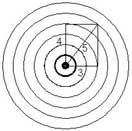
Fig: 1.7.1: Pythagoras' Theorem is Caused by the Spherical shape of Matter as a Spherical Wave Motion of Space. Further, three dimensional space and spherical space are equivalent, as it takes three variables to describe the surface of a sphere. In fact the cause of three dimensional space is simply that matter interacts spherically
Einstein correctly realized that matter was spherically spatially extended, and thus interacted with other matter spherically (this being the cause of Pythagoras' Theorem).
From the latest results of the theory of relativity it is probable that our three dimensional space is also approximately spherical, that is, that the laws of disposition of rigid bodies in it are not given by Euclidean geometry, but approximately by spherical geometry. (Einstein, 1954)
But Einstein did not actually know how matter existed in Space;
The theory of relativity leads to the same law of motion without requiring any special hypothesis whatsoever as to the structure and behavior of the electron. (Einstein, 1954)
His theory is empirically (a posteriori) founded from observation of how matter 'pushes' other matter around, thus his 'representation' of matter as spherical force fields.
Albert Einstein's Metric equation is simply Pythagoras' Theorem applied to the three spatial co-ordinates, and equating them to the displacement of a ray of light.
Special relativity is still based directly on an empirical law,
that of the constancy of the velocity of light.
dx2 + dy2 + dz2 =(cdt)2 where
cdt is the distance traveled by light c in time dt.
The fact that such a metric is called Euclidean is connected with the following. The postulation of such a metric in a three dimensional continuum is fully equivalent to the postulation of the axioms of Euclidean Geometry. The defining equation of the metric is then nothing but the Pythagorean theorem applied to the differentials of the co-ordinates. (Albert Einstein, 1934)
In the special theory of relativity those co-ordinate changes (by transformation) are permitted for which also in the new co-ordinate system the quantity (cdt)2 (fundamental invariant dS2) equals the sum of the squares of the co-ordinate differentials. Such transformations are called Lorentz transformations. (Albert Einstein, 1934)
The reason why Special Relativity works mathematically is twofold:
i) Special relativity assumes that the velocity of light is constant, and thus if there is no change in the velocity of the In-Wave then there can be no acceleration of the Wave-Center. This explains why special relativity is limited to relative motion between matter that is non-accelerated. (Inertial reference frames)
ii) In Albert Einstein's Metric Equations the displacement of the light beam is determined by cdt, thus it makes no difference, mathematically speaking, if the velocity of light is assumed constant, and thus time is changed to keep the metrical equation true (as Albert Einstein did) or conversely, to assume a constant Time, and that the velocity of In-Waves (Light) is changed.
As it turns out, it is this latter case which is true, and this differing velocity
of the In-Waves (from one side of the Wave-Center relative to the other)
is the cause of the apparent motion of Wave-Centers.
Significantly, Albert Einstein confirms this view, that the velocity
of light is not always constant, when he writes;
(Special relativity is founded) on the basis of the law of the constancy of the velocity of light. But the general theory of relativity cannot retain this law. On the contrary, we arrived at the result that according to this latter theory the velocity of light must always depend on the co-ordinates when a gravitational field is present. (Albert Einstein, 1954)
Most importantly though, despite these changes in the velocity of the In-Waves,
their velocity is always measured to be the same.
This curious phenomena occurs because for any relative difference in the velocity of the In-Wave from one side of the Wave-Center to the other, there is a corresponding change in wavelength (which determines length), such that the same In-Wave always meets at its Wave-Center at the same time. As velocity is length/time then the velocity of the In-Wave (velocity of light c) is always measured to be the same, and the difference in wave velocity from one side to the other causes the apparent motion of the Wave-Center through Space. It seems that many people mistakenly assume that the velocity of light is constant, it is not, but is always measured to be the same (irrespective of motion) - this fact has caused much confusion.
Because Albert Einstein misunderstood time (as his geometry of relativity had no dynamic Wave Motion, which is the true cause of time) this then partly explains why he disliked Quantum Theory (though there are many reasons to dislike QT due to its absurd interpretations!).
... the methods introduced by quantum mechanics are not likely to give a useful basis for the whole of physics. In the Schrodinger equation, absolute time, and also the potential energy, play a decisive role, while these two concepts have been recognized by the theory of relativity as inadmissible in principle. (Albert Einstein, 1954)
Now it is this relationship about the change in wavelength and ellipsoidal dimension with Motion that is at the heart of Relativity so it is important to hear what Lorentz has to say on the subject;
...the simplest course is certainly to consider the electrons themselves as wholly immutable, as perfectly rigid spheres, with a constant uniformly distributed surface charge. .. But, unfortunately, it is at variance with our theorem. ... It is for this reason that I have examined what becomes of the theory, if the electrons themselves are considered as liable to the same changes of dimensions as the bodies in which they are contained. ... the explanation of Michelson's experimental result, ... admit, for moving bodies, only a contraction, determined by the coefficient in the direction of the line of motion. The electrons themselves become flattened ellipsoids.
This would enable us to predict that no experiment made with a terrestrial source of light will ever show us an influence of the Earth's motion.
It is clear that, since the observer is unconscious of these changes, ( the contraction of a measuring rod in the direction of motion), relying on his rod, he will not find the true shape of bodies. He will take for a sphere what really is an ellipsoid,
Attention must now be drawn to a remarkable reciprocity that has been pointed out by Albert Einstein. ... Let us now imagine that each observer and (one is moving with constant velocity relative to the other) is able to see the system to which the other belongs, ... It will be clear by what has been said that the impressions received by the two observers and would be alike in all respects. It would be impossible to tell which of them moves or stands still with respect to the ether. ... This is a point which Albert Einstein has laid particular stress on, in a theory in which he starts from what he calls the principle of relativity.
I cannot speak here of the many highly interesting applications which Albert Einstein has made of this principle. His results concerning electromagnetic and optical phenomena agree in the main with those which we have obtained in the preceding pages, the chief difference being that Albert Einstein simply postulates what we have deduced, ... from the fundamental equations of the electromagnetic field. By doing so, he may certainly take credit for making us see in the negative result of experiments like those of Michelson, Rayleigh and Brace, not a fortuitous compensation of opposing effects, but the manifestation of a general and fundamental principle.
Yet, I think, something may also be claimed in the favour of the form in which I have presented the theory. I cannot but regard the ether, which can be the seat of an electromagnetic field with its energy and its vibrations, as endowed with a certain degree of substantiality, however different it may be from all ordinary matter. (Lorentz, 1906)
Thus Lorentz was correct;
In order to explain this absence of any effect of the Earth's translation, I have ventured the hypothesis, that the dimensions of a solid body undergo slight change when it moves through the ether. (Lorentz, 1906)
Most profoundly, Lorentz first deduced the foundations of Albert Einstein's Relativity from the assumption of a rigid Space (ether), and that the cause of the electromagnetic field effect that he was using was in fact vibrations in this Space/Ether.
Though Albert Einstein related relative motions of matter only to other matter and not back to an absolute Space like Lorentz did, (which is mathematically simpler I suppose) the important point is that the Logic of Relativity is founded on, and completely consistent with, an Absolute Space. (Contrary to current opinions)
From Lorentz's purely mathematical foundation Albert Einstein then developed his Theory of Relativity, which assumed that matter existed as a spherical spatially extended field which changes ellipsoidal shape with motion and thus also with acceleration (which leads to the ellipsoidal geometry which underpins General Relativity and gravitation).
Albert Einstein took one further step than Lorentz though, and assumed (like Leibniz and Mach) that all motion of matter was relative only to other matter, he writes;
It has, of course, been known since the days of the ancient Greeks that in order to describe the movement of a body, a second body is needed to which the movement of the first is referred. (Albert Einstein, 1919)
By doing this Albert Einstein effectively renounced the concept of a fundamental Space separate from matter (as a field), as he explains below;
Since the field exists even in a vacuum, should one conceive of the field as state of a 'carrier', or should it rather be endowed with an independent existence not reducible to anything else? In other words, is there an 'aether' which carries the field; the aether being considered in the undulatory state, for example, when it carries light waves? The question has a natural answer: Because one cannot dispense with the field concept, it is preferable not to introduce in addition a carrier with hypothetical properties. (Albert Einstein, 1950)
Physical objects are not in space, but these objects are spatially
extended. In this way the concept 'empty space' loses its meaning.
The field thus becomes an irreducible element of physical description, irreducible in the same sense as the concept of matter (particles) in the theory of Newton. (Albert Einstein, 1954)
By using Albert Einstein's own words it is now possible to show that his ideas
need only a slight modification - from his foundation that matter is a spherical
spatially extended 'field', to a foundation based upon Space rather than
matter, and that matter is caused by Spherical Standing Waves in Space.
Albert Einstein is correct in asserting that matter is spherically spatially extended, and thus to reject the concept of the particle;
According to general relativity, the concept of space detached from any physical content (matter, objects) does not exist. The physical reality of space is represented by a field whose components are continuous functions of four independent variables - the co-ordinates of space and time. Since the theory of general relativity implies the representation of physical reality by a continuous field, the concept of particles or material points cannot play a fundamental part, nor can the concept of motion. The particle can only appear as a limited region in space in which the field strength or the energy density are particularly high. (Albert Einstein, 1950)
Albert Einstein is nearly correct when he says that the particle can only appear as a limited region in Space in which the field strength/energy density is particularly high, for this is simply the high Wave-Amplitude & Density of the Wave-Center of the Spherical Standing Wave. This obviously explains why Matter can never exceed the Velocity of Light. As the particle is in fact the Wave-Center of a Spherical Standing Wave (SSW), it is impossible for this Wave-Center to ever move faster than the velocity of the incoming waves, which is the velocity of light.
Unfortunately Albert Einstein incorrectly assumed that a mathematical description of effects, the spherical, spatially extended continuous force field, was the best way of representing reality. In fact these force field effects are caused by the changing velocity of the In-Waves which determine the future position of the Wave-Center (and thus the apparent force and accelerated motion of the particle). In essence the field theory is a continuous mathematical approximation of effects which are caused by many discrete (quantum) standing wave interactions. Hence the Wave Structure of Matter (WSM) explains the 'cause' of both the 'field' and the 'particle effects'.
Though most of Albert Einstein's discussion of Space is in terms of matter interactions described by fields, it is important to realise that Albert Einstein actually knew that Space must somehow exist and have properties that caused these force fields, he writes;
Recapitulating, we may say that according to the general theory of relativity space is endowed with physical qualities; in this sense, therefore, there exists an ether. According to the general theory of relativity space without ether is unthinkable; for in such space there not only would be no propagation of light, but also no possibility of existence for standards of space and time (measuring-rods and clocks), nor therefore any space-time intervals in the physical sense. (Albert Einstein, Leiden Lecture, 1920)
In ending this summary of Special Relativity, it is important to acknowledge the great power of this mathematical theory, as Albert Einstein explains (for it leads directly to Albert Einstein's famous E=mc2). But now we realise that this equivalence of Matter and Energy is simply because they are both manifestations of the same thing, Wave-Motion of Space.
The heuristic method of the special theory of relativity is characterized by the following principle: only those equations are admissible as an expression of natural laws which do not change their form when the co-ordinates are changed by means of the Lorentz transformation (covariance of equations with respect to the Lorentz transformations). This method led to the discovery of the necessary connection between momentum and energy, between electric and magnetic field strength, electrostatic and electrodynamic forces, inert mass and energy; thus the number of independent concepts and fundamental equations was reduced. (Albert Einstein, 1934)
Albert Einstein's Theory of Special Relativity
Help Humanity
"You must be the change you wish to see in the world."
(Mohandas Gandhi)
 "When forced to summarize the general theory of relativity in one sentence:
Time and space and gravitation have no separate existence from matter. ... Physical objects are not in space, but these objects are spatially extended. In this way the concept 'empty space' loses its meaning. ... The particle can only appear as a limited region in space in which
the field strength or the energy density are particularly high. ...
"When forced to summarize the general theory of relativity in one sentence:
Time and space and gravitation have no separate existence from matter. ... Physical objects are not in space, but these objects are spatially extended. In this way the concept 'empty space' loses its meaning. ... The particle can only appear as a limited region in space in which
the field strength or the energy density are particularly high. ...
The free, unhampered exchange of ideas and scientific conclusions is necessary for the sound development of science, as it is in all spheres
of cultural life. ... We must not conceal from ourselves that no improvement in the present depressing situation is possible without
a severe struggle; for the handful of those who are really determined to do something is minute in comparison with the mass of the lukewarm
and the misguided. ...
Humanity is going to need a substantially new way of thinking if it is to survive!" (Albert Einstein)
 We can now deduce the most simple science theory of reality - the wave structure of matter in space. By understanding how we and everything around us are interconnected
in Space we can then deduce solutions to the fundamental problems of human knowledge in physics, philosophy, metaphysics, theology, education, health, evolution and ecology, politics and society.
We can now deduce the most simple science theory of reality - the wave structure of matter in space. By understanding how we and everything around us are interconnected
in Space we can then deduce solutions to the fundamental problems of human knowledge in physics, philosophy, metaphysics, theology, education, health, evolution and ecology, politics and society.
This is the profound new way of thinking that Einstein
realised, that we exist as spatially extended structures of the universe - the discrete and separate body an illusion. This simply confirms the
intuitions of the ancient philosophers and mystics.
Given the current censorship in physics / philosophy of science journals (based on the standard model of particle physics / big bang cosmology) the internet is the best hope for getting new knowledge
known to the world. But that depends on you, the people who care about science and society, realise the importance of truth and reality.
It is Easy to Help!
Just click on the Social Network links at top of page, or copy a nice image or quote you like and share it. We have a wonderful collection of knowledge from the greatest minds in human history, so people will appreciate your contributions. In doing this you will help a new generation of scientists see that there is a simple sensible explanation of physical reality (One Substance, One Law) - the source of truth and wisdom, the only cure for the madness of man! Thanks! Geoff Haselhurst (Updated May, 2025)
A new scientific truth does not triumph by convincing its opponents and making them see the light, but rather because its opponents eventually die, and a new generation grows up that is familiar with it. (Max Planck, 1920)
"All that is necessary for evil to succeed is for good people to do nothing."
(Edmund Burke)
"In a time of universal deceit - telling the truth is a revolutionary act."
(George Orwell)
"Hell is Truth Seen Too Late."
(Thomas Hobbes)
Legal Disclaimer and Privacy Policy
